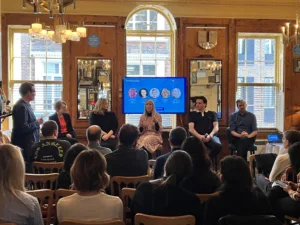NDA recently held a roundtable, in partnership with Permutive, to discuss the role of first-party data in the privacy-first world. We were joined by Pete Markey, Chief Marketing Officer at Boots UK; Barbara Piras, Head of Performance Marketing at Tui Group; Ian Kelly, Global Lead, Connected Experience Programme at Reckitt; Sam Gaunt, Northern Europe Media Director at GSK; and Permutive’s own Head of Advertiser Strategy, Elizabeth Brennan.
In the first article, we briefly mentioned the wealth of first-party data that publishers have from their ability to gain a holistic view of every visitor to their sites through first-party cookies. And this data can be further supplemented through avenues like newsletter sign-ups or competitions.
The abundance of data in the hands of publishers, coupled with changes around data privacy and identity, has put them in a strong position to prove their value to advertisers.
“For media owners, this is the lifeline,” said Boots’ Markey. “This is the future for them, in the context of where their businesses are going and where their future profits are coming from, so they’ve invested heavily in making sure that they have a stronger database. And they know more and more about their readers, viewers, or listeners. But the pressure is on for media owners to keep raising the bar in terms of quality data, because that’s where their future value, benefits, and profits are going to come from.”
This point was somewhat echoed by GSK’s Gaunt, who sees the current privacy-first world and the desire for advertisers to work directly with publishers as an “incentive for publishers to create audiences which are relevant to their advertiser partners”.
Coming together
As the industry changes, and third-party cookies disappear, we’re going to see brands forming closer relationships with publishers in order to continue reaching audiences. And the formation of these relationships is already happening at an accelerated pace.
“There is a really positive shift. We have seen a 49-fold increase in impressions being served using publisher first-party data this year alone. It’s a phenomenal shift in behaviour,” said Permutive’s Brennan. “If you have efficiency at the heart of your media plan, and you have machine talking to machine, it’s very transactional. It removes the need to have a partnership level relationship with a publisher.
“Publishers are saying that the shift in behaviour has been incredibly marked, and they’ve got more and more demand for that first-party data, because it drives better brand consideration, better brand uplift study results, etc. So, publishers are able to demonstrably give data back to advertisers, which shows the strength of their positioning.”
For GSK’s Gaunt, the importance of that direct relationship comes into play “to help the publisher really understand what kind of audiences are key growth audiences for our brands”.
“You can start to think about where we can create relevant pockets of these audiences, and grow them through relevant editorial content, and then provide that inventory that’s available for that audience. That’s where we see the evolution of that direct relationship,” he said.
These direct relationships also go a long way toward allaying the concerns that existed in the world of reliance on third-party cookies.
“As we move toward having fewer agreements, it becomes easier to make sure that you’re working with high-quality publishers and high-quality content,” said Tui’s Piras.
“Brand safety was vital when we were working in a transactional environment. At one point, we stopped doing any type of news-related advertising, because it was too dangerous for us. It was a question of brand image. Also, the data we were getting wasn’t matching some of the standard results, so it became a question of non-viable traffic. It was just very murky,” she continued.
“This is a positive shift toward first-party data. It means new relationship establishment, new standards, new ways of advertising, and will help solve some of the problems.”
Customer focus
Nonetheless, despite this shift toward direct publisher relationships, not all brands will be putting as much emphasis on the use of publisher data.
Reckitt’s focus, in the UK at least, is on continuing to form direct relationships with its customers through its ‘connected experience’ programme, which focuses on using data gained directly from products to create experiences.
“The prime objective is to drive a direct relationship with the customer,” said Reckitt’s Kelly. “That’s just one avenue of a much broader piece, so there will be markets and brands that will still be using third- and second-party data. But, primarily, the drive from Reckitt is to use our products to form direct customer relationships, because that’s going to be richer data, and then look to see how that augments into the wider datasets.”









